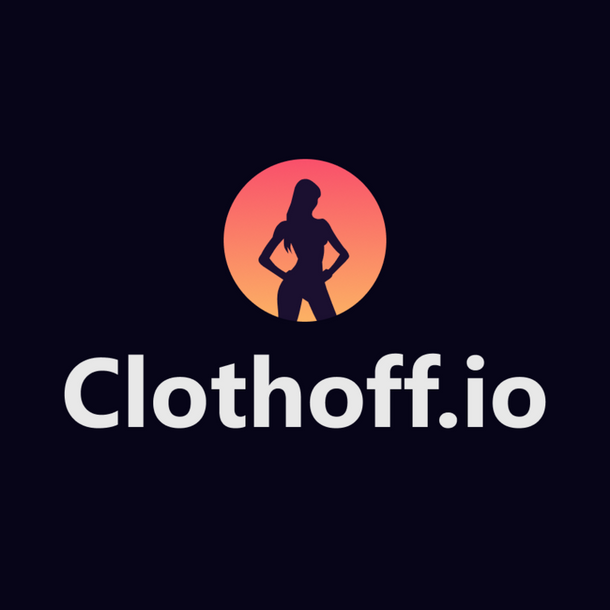Is the age of digital alteration upon us, where the line between reality and fabrication blurs with every click? The rise of AI-powered "undressing" tools presents a complex challenge, forcing us to confront the ethical implications of readily available image manipulation.
The digital landscape is experiencing a dramatic shift, fueled by advancements in artificial intelligence. One area where this is particularly evident is in image manipulation. Tools leveraging AI are now capable of performing tasks previously requiring highly specialized skills and extensive manual effort. Among these are applications designed to digitally remove clothing from images, raising significant questions about privacy, consent, and the potential for misuse. These tools, often marketed as "AI clothes removers" or "nudification technology," employ sophisticated algorithms to analyze and alter images.
The concept of AI clothes removal might seem intriguing, a technological novelty, but the underlying reality is far more nuanced. Several platforms, including Clothoff, have emerged, offering users the ability to "undress" photos. These tools are often touted for their speed and ease of use, promising results in seconds. However, it's crucial to understand the technology behind these applications, their potential impact, and the ethical considerations they raise. For instance, "Clothoff io" and "Clothoff ai" are presented as platforms for image alteration, capable of generating nude portrayals from existing photographs. These claims, while seemingly straightforward, require a deeper examination of the underlying mechanisms and the consequences of their use. The availability of such tools raises the stakes when considering the privacy and safety of individuals. These platforms, with their advanced AI algorithms, are able to process images, and offer features like Instagram uploads, and other interactive options.
- Pornhub More Your Ultimate Guide To Adult Entertainment
- Bolly4u Watch Movies Free Risks Alternatives You Need To Know
The use of such technology has opened debates about their impact. The creators and proponents of these tools often highlight their potential applications in areas like design or content creation. They emphasize the speed and efficiency with which these tools can transform images. However, it's important to look beyond the surface. The very nature of these applications their ability to create nude transformations invites questions about consent and the potential for malicious use. Concerns of misuse are valid when discussing AI clothes removers, as they introduce the potential for non-consensual image creation. There is also the fact that it is not only about the technology itself, but also the user behavior and potential impacts on victims. "Fake nudes created by ai nudify sites are causing real harm, victims say," as was the case in a recent 60 minutes episode.
The rise of AI-powered image manipulation tools signifies a watershed moment. It compels us to reconsider the balance between technological advancement and ethical responsibility. While these tools offer certain benefits, the potential for harm is undeniable. We must carefully assess the implications of this technology and work towards responsible usage, ethical practices, and effective safeguards.
Eraser, for example, is one of the available free options for undressing photos, which is available for both desktop and mobile devices. AI clothes remover aiclothesremover and ai clothes removal tools advertise amazing results that are fast, easy, and of high quality. Clothoff is similar to deepnudenow in terms of its features and functionality. However, clothoff is generally considered to be less accurate than deepnudenow. Users can also access the clothoff ai generator and the clothoff ai telegram bot for free and easy editing, with exceptional accuracy and privacy. With the rapid advancements in AI, clothoff stands as a testament to the innovative applications of this technology in the realm of image processing. "Descubre el quitador de ropa de ia para desnudar fotos usando tecnolog\u00eda avanzada de ia. Crea f\u00e1cilmente desnudos generados por ia con nuestra herramienta gratuita de desnudos de ia, que incluye funciones de desnudos \u00edntegros y mucho m\u00e1s."
- Vegamovies Everything You Need To Know Alternatives In 2024
- Kannada Movies 2025 Top Picks Where To Watch
Consider the capabilities of an "ai clothes changer," which allows users to virtually try on a wide variety of clothing styles. This is a clear contrast to the more controversial applications of AI in image alteration. AI clothes changers provide a user-friendly and ethical way to explore different looks. They operate by overlaying clothing styles onto existing images, allowing users to experiment with different outfits without having to physically try them on. This application can be used by fashion designers and the average consumer alike.
The underlying technology of these AI tools relies on advanced algorithms, particularly deep learning. These algorithms are trained on vast datasets of images, enabling them to recognize patterns, and make alterations with impressive accuracy. Clothoff utilizes advanced artificial intelligence algorithms to process images and deliver realistic results in just seconds. The tool utilizes deep learning algorithms to analyze clothing in images and create realistic nude portrayals. Clothoff employs advanced neural networks to deliver precise image transformations. The application prioritizes user privacy and security, ensuring that no data is stored or shared without consent. Advanced ai algorithms digitally remove clothing from images. Clothoff prioritizes user privacy, ensuring no data retention. The platforms promise quick and easy results, often emphasizing the speed and efficiency of the process. They are available on the web, iOS, and Android platforms.
The discussion around AI clothes removal also often includes a comparison of different tools. Popular options like Clothoff.io and deepnude.cc, for example, are frequently compared based on their features, pricing, and the quality of their output. March 10, 2024, marked a significant moment as the listing was verified! However, while user-friendly tools and free trials are available, it is important to remember the importance of ethical considerations.
The rise of AI tools capable of digitally removing clothing from images presents a complex landscape. On the one hand, there's the allure of technological advancement and the potential for creative applications. On the other, there are serious ethical concerns, including potential misuse and harm. The challenge lies in navigating this complex terrain responsibly. We must actively work towards creating safeguards, and promoting awareness of the potential risks, and ensuring that the benefits of this technology do not come at the expense of individual privacy and safety.
With our AI clothes changer, you can virtually try on a wide variety of clothing styles without ever stepping into a fitting room. Whether youre exploring casual, formal, or trendy outfits, the tool allows you to experiment with different looks and see how each style flatters your. virtually try more clothing styles with ai clothes changer.
| AI Clothes Remover Tools: Key Features and Considerations | |
|---|---|
| What it is: | AI-powered software that digitally removes clothing from images. |
| How it works: | Utilizes deep learning and neural networks to analyze images and generate altered versions. |
| Key features: |
|
| Potential applications: |
|
| Ethical concerns: |
|
| Privacy considerations: |
|
| Examples of tools: | Clothoff, deepnude, Eraser, AI Clothes Remover, and others. |
| Where to access: | Websites, mobile apps (iOS and Android), and through Telegram bots. |
| Key takeaway: | While AI clothes removers offer technological novelty, the potential for misuse requires careful consideration of ethical, legal, and privacy implications. |
| Recommended Reading: | WIRED - The AI Nude Apps That Are Creating a Moral Crisis |


